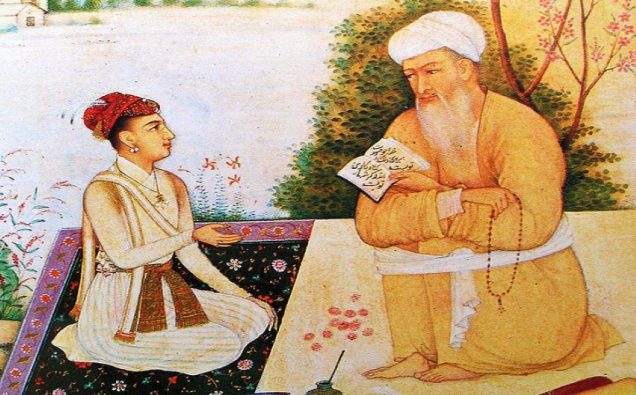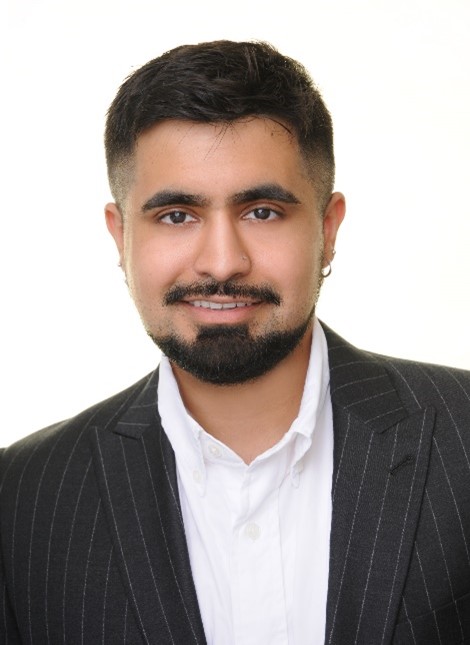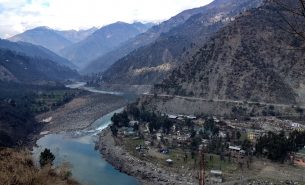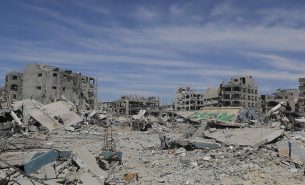
During the Fall 2022 semester, I had the pleasure of taking a course titled “The World of Islam,” taught by Ambassador Akbar Ahmed, an American-Pakistani academic, author, poet, playwright, filmmaker, former Pakistan High Commissioner to the UK and Ireland, Wilson Center Global Fellow, and the Ibn Khaldun Chair of Islamic Studies at American University. One of my personal highlights of the course was Dr. Ahmed’s play The Trial of Dara Shikoh, a historical reimagining of Prince Dara Shikoh’s execution and Aurangzeb’s rise to the Mughal throne in the 17th century. But what does a play about 17th-century royalty have to do with the world of Islam today? The Trial of Dara Shikoh envisions Prince Dara as a tragic hero with a timeless message for unity, not only in India but among all the world’s faiths. In this article, I will discuss the historical and modern significance of Dara Shikoh’s message in times of increasing religious conflict and what Dara Shikoh means to me as a South Asian American.
The Historical Significance of Dara Shikoh
Shah Jehan was one of the mighty emperors of the Mughal Empire. His name is easily recognized by many as he commissioned the Taj Mahal as a tomb for his beloved wife, Mumtaz Mahal. Prince Dara Shikoh was the eldest son of Emperor Shah Jehan and was therefore named heir apparent to the Mughal throne.
During this period, Muslim empires like the Ottomans and Safavids held great power, but none were as wealthy and prosperous as the Mughal Empire at its peak, which accounted for a quarter of the world’s GDP. However, the 17th century was a key turning point for many civilizations as European colonists started traveling and surveying land to conquer. Whether India would be the next land conquered or not would depend on the Mughals holding on to their power.
India has always been a very complex mix of cultures and religions, which at times led to tensions. Early Mughals had imposed a tax for non-Muslims, which essentially was an indirect way to encourage conversion. Under Emperor Akbar, the Great, Shah Jehan’s father, abolished this tax as a way of promoting unity in the empire after marrying a Rajput Hindu Princess, Jodha Bai. Akbar knew unity between India’s religious communities was key in maintaining power and protecting the empire from invasion.
Dara Shikoh, like his grandfather Emperor Akbar, was very interested in maintaining unity and even went the distance to understand his soon-to-be subjects. Dara Shikoh was responsible for the first-ever translation of the Hindu text of the Upanishads into Persian and also translated the Bhagavad Gita, thus allowing both texts to be introduced to the world (Ahmed). He was well-liked by mystics of all religions, and many awaited Dara Shikoh’s ascension to the throne, given his ideology toward unification (Ahmed). However, Dara Shikoh’s brother Aurangzeb was not going to let that happen and utilized his military and administrative power to defeat his brother and declare himself emperor. Aurangzeb was far more of an orthodox Muslim and according to Dr. Ahmed, “Many powerful Muslim nobles and generals preferred Aurangzeb in order to underline the Islamic nature of the Mughal Empire.” Aurangzeb eventually imprisoned his father in the Agra Fort until his death and executed his brother Dara.
Under Aurangzeb’s rule, the tax on non-Muslims was reinstated along with oppressive policies towards non-Muslim communities. Many stories of Sikh Gurus are about the abuse they faced at the hands of Aurangzeb’s rule, such as Guru Govind Singh’s children being buried alive behind a wall in front of his eyes because he refused to convert. Such incidents led to major tensions between religious groups. However, Aurangzeb was also able to expand the reach of the Mughal empire further than any other previous king, fortifying the empire’s strength.
As I mentioned, this time period put many empires at a crossroads, with Europeans surveying the globe for land and resources. While the strength of the Mughal empire was beyond anyone’s wildest imagination, it does not take much for the house of cards to eventually fall. This clash between the two brother’s conflicting ideologies is a perfect example of just how crucial this period was. We saw what Aurangzeb did and it is possible that Dara Shikoh’s ideology of unification may have helped prevent colonialism or at least made it difficult for colonists to exploit religious tensions in their favor, but we will never know. However, the thought of “what if?” is enough for someone to dream of a world where the famines imposed on Indians by the British, the Partition of India (which the United Nations Human Rights Council calls “the world’s largest mass migration”), and countless other atrocities could have been prevented had we been under Dara Shikoh’s unifying hand. Could the world have been in a much better place or was Aurganzeb’s ideology the only way forward?
The Trial of Dara Shikoh and The World of Islam
Dr. Ahmed’s play, The Trial of Dara Shikoh opens with Dara Shikoh on trial for apostasy, an allegation leveled at him by Aurangzeb. Dara Shikoh chooses to represent himself and testify. In addition, there are two other witnesses, a Hindu scholar named Gopi Lal, and a Sikh religious leader named Bahadur Singh. Both witnesses attest to Dara Shikoh’s work in creating religious unity which is unfortunately used against him by prosecutor Abdullah Khan. Khan argues that Dara Shikoh’s work with these scholars and belief that all religions are somehow intertwined is blasphemous and deserving of the highest sentence: the death penalty. One major example that Khan uses to argue his case is a ring that Dara Shikoh wears. On one side of the ring, the inscription reads, “Allah,” while the other side reads, “Prabhu,” the Sanskrit word for God. Dara Shikoh says “the two universes are encompassed and counterpoised in harmony on one small ring. For me, the concept provides a visual representation in its continuum of the essence of our spiritual unity (Ahmed).” Prosecutor Khan calls this show of unity to be blasphemous, claiming that this is proof of Dara Shikoh wandering away, “from the straight path of Islam (Ahmed).” So how does any of this tie in with Dr. Ahmed’s teachings in The World Of Islam?
The World Of Islam is a very popular course at American University for undergraduate students wishing to select the Middle East and North Africa (MENA) as a regional focus or students of International Service. Dr. Ahmed started with a discussion on early Islam and some theological concepts. We then proceeded to discuss the Golden Age of Islam, the colonial and the post-colonial identity, eventually leading to modern conflicts with and within the Muslim world.
Dr. Ahmed has a way of planning a brighter future by looking at the successes of the past. A major discussion we had in class was on the Caliphate of Córdoba when the Umayyad Dynasty established its presence in Andalusia. Dr. Ahmed explained how this was the golden age of Islam where religious and ethnic diversity not only thrived but was encouraged by the Caliphate and many technological advancements happened, some of which we still use today. Dr. Ahmed compared Córdoba to The United States, asking the class whether we currently live in the new Andalusia. Additionally, Dr. Ahmed also tried to dispel stereotypes of Muslims by telling us key concepts, principles, and events in the Holy Quran. For example, we discussed inclusivity in Islam by talking about Bilal Ibn Rabah, an Abyssian slave freed by Prophet Muhammed (peace be upon him). Bilal, who became a companion of the Prophet of Islam, was the first person to give the Muslim call to prayer, also known as Azan (or Adhan). Additionally, we discussed key figures like Khadija, the first wife of Prophet Muhammed (peace be upon him). Khadija was the first Muslim, proving that women have an integral place in Islam. We were also taught about Aisha, the youngest and revered wife of Prophet Muhammed (peace be upon him), who led troops into war! Yes, female Muslim general in the 7th century!
Greatest of all Dr. Ahmed taught us about how Islam is not about divisions or about fighting, it is about peace and harmony. Dara Shikoh’s ideals were the exact same, finding peace and harmony. The Trial Of Dara Shikoh could be considered a way to not only help understand the past but also to understand our present. There are very clearly individuals in the Muslim world that believe Aurangzeb’s orthodox ideology is the best way forward, and similarly, there are people who wished they could have seen Dara Shikoh’s views come to fruition. Both sides remain at odds with each other as Muslims work to understand their place in the world despite the challenges of conflict, globalization, and Islamophobia.
Dara Shikoh and Me
When I was growing up, my maternal grandmother would come to the United States from India to take care of me while my mother worked. I have so many fond memories of spending time with her, but some of my most fond memories were spent learning about her time growing up in an undivided India. Unfortunately, those stories also came with horrifying recounts of the partition. Both my grandparents were born in what is now Pakistan, 75 years after the end of British colonization. My grandmother, Shakuntala, was born a daughter of a Sikh ophthalmologist, Rai Bahadur Aroor Singh Chawala, and a Hindu lady, Kesar Devi in Daska, a town in Punjab. Already, my family had created a bond across religious tensions, one that resulted in eight brothers and sisters.
My maternal grandfather was born to landowners Gopal Singh and Veeranwali Saluja in Jhelum, Punjab. The story of my grandfather, while very interesting, doesn’t quite involve the partition, as his family had moved to Jaipur, Rajasthan, long before. However, my grandmother and her family ended up having to escape to India. She told me that there was never any “formal announcement,”; it just came through the grapevine that the partition was happening and everyone needed to go to their respective side. Initially, my great-grandfather was apprehensive to leave but after hearing of the atrocities that occurred, he purchased a rifle and poison. He had instructed all the women of the house that if anyone attempted to come in and cause harm that they were all to line up against the wall where they would be shot one by one and if they survived, poison was plan B. It was their Muslim neighbors who helped my half-Sikh and half-Hindu family escape. After hours of sitting in a tiny military jeep with at least 3 other families packed like sardines, they arrived at a refugee camp across the newly created border with nothing but the clothes on their backs. Their lives as they knew them, were forever gone. My grandmother talked about how her mother left milk boiling on the stove before they ran out of their home. From this refugee camp in Amritsar, just past the famed Wagah Border, they were then displaced again to Jalander, Punjab where they worked to rebuild their lives.
My mother, Rima was born in New Delhi and soon thereafter my grandfather got a job offer in Patiala, Punjab. So their family of three moved. My mother ended up attending Yadavindra Public School, the sister school of Aitchison College, Lahore. Growing up, my mother taught me exactly what my grandparents taught her: all religions believe in peace and unity, and all faiths deserve equal respect.
Despite the hardship my grandmother’s family went through, she recognized that it was a mutual respect for one another despite religion that not only created her family but allowed her to escape the atrocities of the Partition. My grandfather, a lawyer by profession, worked on cases for women’s rights and religious discrimination hoping that the wounds of the Partition would eventually heal. However, religious tensions only got worse with the Indo-Pak wars and the 1984 riots against Sikhs following the death of Prime Minister Indira Gandhi.
Growing up and learning this history of my family, all I could think of is how different my life would have been if my family’s history was rooted in intolerance. I probably would not have been here today. For centuries, inter-religious unity (or at the very least tolerance) existed in India and led to such amazing achievements. The great Mughal empire, of which Dara Shikoh was named heir apparent, was a blend of Persian, Central Asian, and Indian cultures. This can be seen in Shah Jehan’s Taj Mahal.
On the other hand, Aurangzeb deepened religious tensions which I believe eventually led to the almost irreconcilable frictions that caused the partition. Could Dara Shikoh have prevented the Partition? I can’t definitively answer that question but, unity would have made it harder for India to fall into the hands of the British Empire.
I did not learn about Dara Shikoh until I was in Dr. Ahmed’s class, and I believe that it is a disservice to the world for us not to have to learn about him earlier. There are so many stories across the world, just like mine, of families created and surviving thanks to unity across perceived “enemy” lines. I’m sure every South Asian, whether they are Pakistani, Indian, Nepalese, Sri Lankan, or Bangladeshi, can attest to this. Time and time again, history has taught us that unity maintains culture while those who are divided fall. The British took advantage of this with their “divide and rule” policy. I’m sure Aurangzeb was not all bad, he did help the empire to flourish. He also did not ever use state funds for himself, instead making skull caps and shoes to earn a living.
Dr. Ahmed told us that later writings by Aurangzeb show that he regretted executing his brother and imprisoning his father. It still does not stop me from thinking “what if.” I try to honor my family’s legacy by learning about the past and present conflicts between religious communities in South Asia and hope that I can one day see peace between its nations. Recently, I started a fundraiser at American University for flood relief in Pakistan. I feel like even small gestures of kindness can have a profound impact. They can even help start the process of healing deep wounds. Beyond asking, “What if?” Dara Shikoh’s story and Dr. Ahmed’s teachings stand as a reminder that if those in the past could envision a future of peace and unity, we should never stop fighting for those values today.
















Wonderful goods from you, man. I have be aware your stuff prior to
and you’re simply too excellent. I actually like what you’ve got right here, really like what you are stating and the
best way by which you are saying it. You are making it
entertaining and you continue to care for to keep it smart.
I cant wait to read far more from you. This is really a tremendous website.